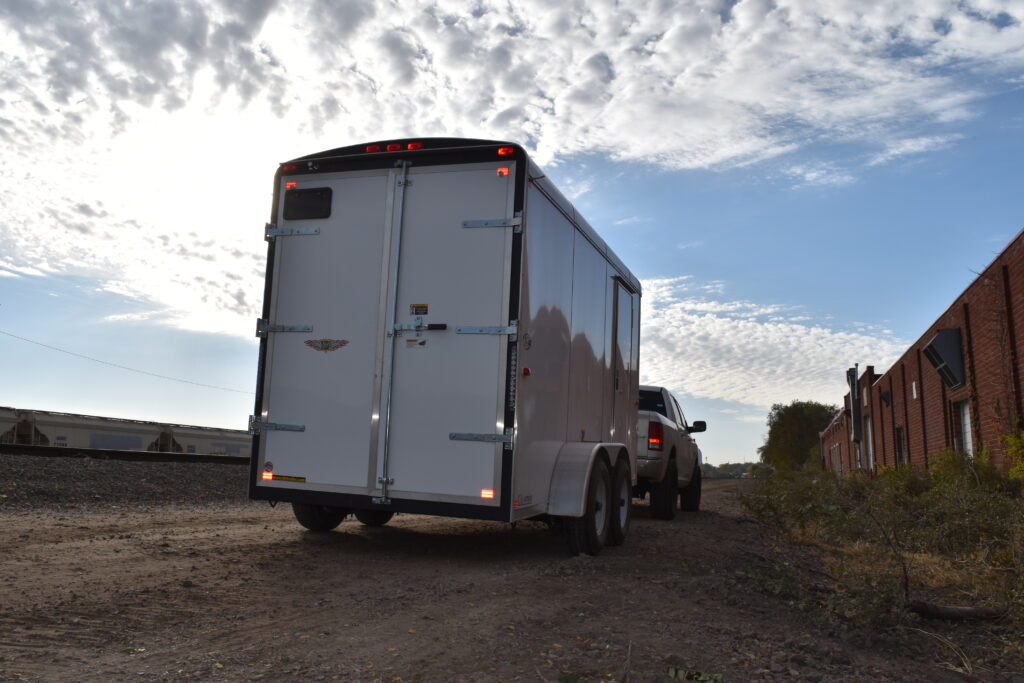How Do You Know if You’re Hauling Too Much Weight?
If you haul cargo on a trailer, you know the importance of weight ratings and not driving with too much weight. Navigating the stipulations and recommendations can be challenging — you need to know how much your trailer and cargo weigh, the maximum weight your trailer is designed to carry, and the mandatory limits. You will also want to ensure the weight of the trailer, cargo, passengers and fuel doesn’t exceed the towing capacity of the vehicle.
Understanding these factors is vital for road safety, compliance and keeping your vehicle in good condition.
Understanding Trailer Weight Limits
Familiarizing yourself with the mandatory guidelines for trailer weight limits is crucial and can give you peace of mind while on the road. When navigating trailer weight limits, consider the following.
1. Gross Vehicle Weight Rating
The gross vehicle weight rating (GVWR) considers everything included in and on your vehicle. It’s the maximum weight your truck can carry, including the entire weight of the vehicle itself, as well as its accessories, fuel, cargo and passengers.
2. Axle Weight Limits
Axle weight limits describe how much weight your vehicle’s axles can support. This varies by state and your truck’s axle setup:
- Single axle: 20,000 pounds.
- Tandem axle: 34,000 or 36,000 pounds, depending on Interstate vs. non-Interstate highways.
- Tridem axle: 42,000 pounds.
- Gross weight: 80,000 or 84,000 pounds, depending on Interstate vs. non-Interstate highways.
Consulting official transportation bodies is the best way to determine specific application loads.
3. The Importance of Compliance
Abiding by weight limits protects the integrity of your vehicle and trailer, boosts safety on the road, and saves you time and money. It also helps you avoid fines and legal issues tied to noncompliance.
Signs You’re Hauling Too Much Weight
Your vehicle will give you indications that you could be carrying too much weight. Noting these is key so you can reduce weight and preserve your vehicle’s longevity:
- Visual indicators: You may notice bulging tires, steering difficulties and sagging suspension.
- Performance issues: Performance issues can include changes in fuel efficiency and difficulty breaking and accelerating quickly.
- Physical signs of wear and tear: Look out for excessive wear on brakes and tire degradation.
- Other components: Steering, handling and maneuverability can also be affected.
How to Calculate Your Load
In addition to GVWRs, to calculate your load, keep the following in mind:
- Curb weight: The curb weight is your vehicle’s weight when it’s ready to drive, including its necessary fluids and fuel.
- Payload capacity: Your truck’s payload capacity is the additional weight it can carry. It includes curb weight, cargo and passengers. Think of the payload capacity as the maximum weight your vehicle can carry in addition to its own weight.
Here’s how it fits together:
- Determine your vehicle’s curb weight and GVWR, which are both typically provided by the manufacturer.
- Find the vehicle’s payload capacity by subtracting its curb weight from its GVWR.
- Determine the weight of all of your cargo and passengers and add this to your vehicle’s curb weight to find your total load.
- Compare the total load to your vehicle’s GVWR and ensure the total load does not exceed the GVWR.
Take this example — say your vehicle’s curb weight is 8,000 pounds with a GVWR of 10,000 pounds. The payload capacity is 2,000 pounds, which means your vehicle can haul 2,000 pounds of extra weight.
Say your cargo totals 1,150 pounds, and your passengers together weigh 550 pounds. Add the resulting 1,700 pounds to the vehicle’s curb weight of 8,000 pounds. The total weight is 9,700 pounds, which does not exceed the vehicle’s GVWR. This means your load meets safety regulations.
Tips on Distributing Weight Properly
Try and balance the cargo to ensure the load remains safe. Try the following:
- Distribute the weight evenly. (aim for 10% of the overall trailer weight on the hitch)
- Place the heaviest items near the front.
- Ensure the items are secure.
Tools and Resources
You can use several resources to ensure your vehicle stays in good condition:
- Load calculators: A load calculator helps determine the right load for your specific vehicle. You can find some online, but it’s essential to ensure they’re accurate.
- Maintenance tips: Keep your trailer in good condition by keeping everything greased and clean, checking its electrical system, and inspecting your tires.
- Professional assistance: Accurately calculating your cargo and trailer is crucial for safety and compliance. Seek professional assistance if you need clarification on any aspect of the process.
Get in Touch With Blueswift Axles for Replacement Axles for Your Vehicle
When hauling cargo, maintaining your vehicle and remaining within weight limits is vital. Axles are crucial in distributing your cargo efficiently and placing less stress on your tires.
We at Blueswift Axles are a leading trailer parts provider specializing in trailer axles. If you require speedy assistance getting replacement axles for your trailer, we can build a solution for you in 48 hours. Fill in this online form for a free quote, and one of our specialists will contact you promptly.

